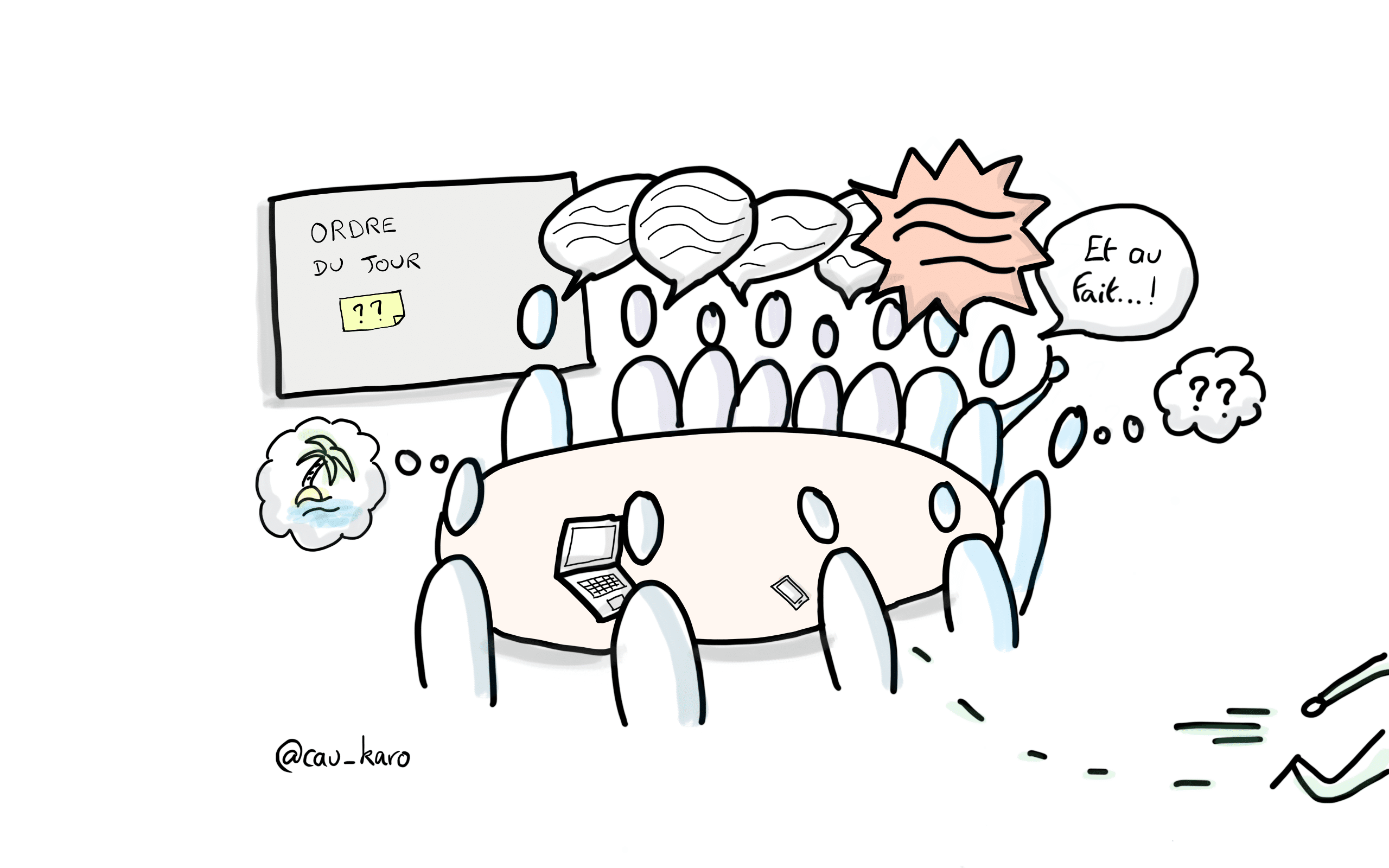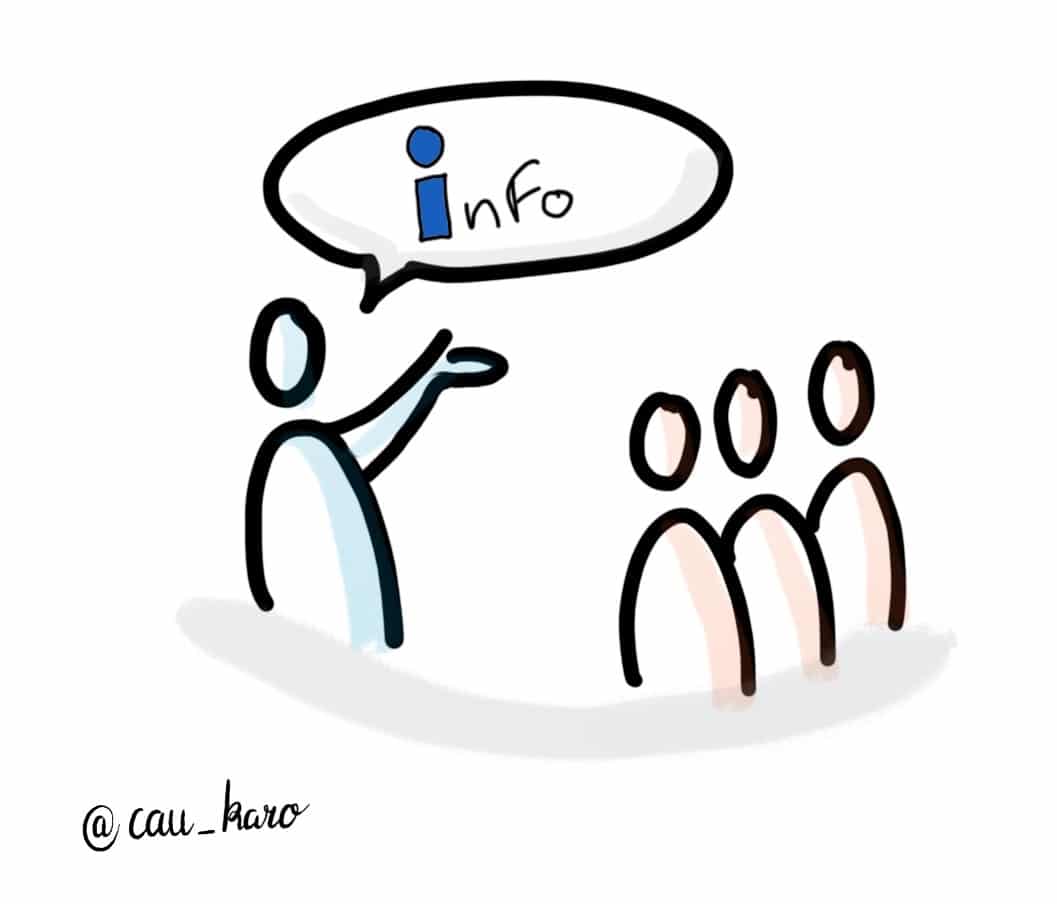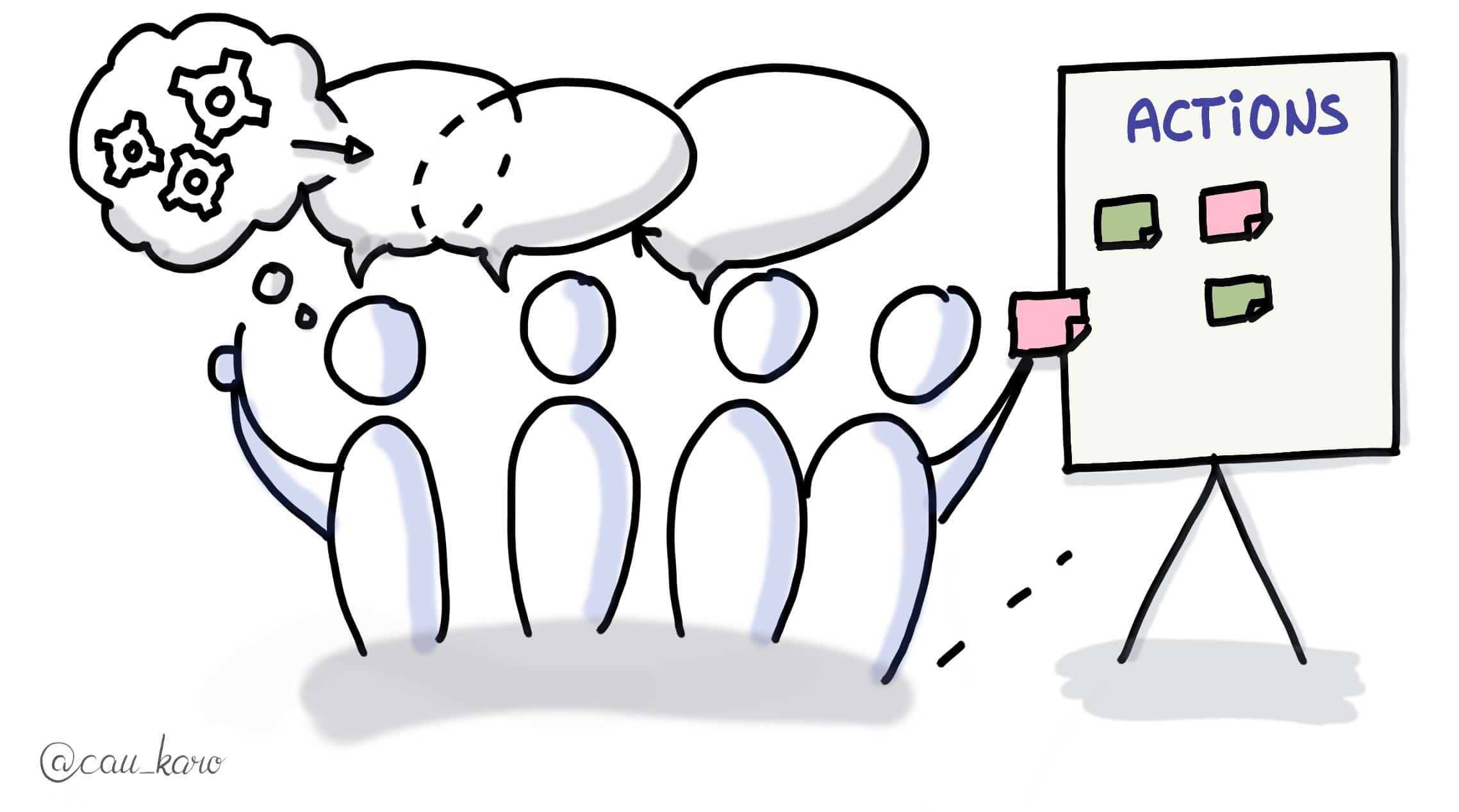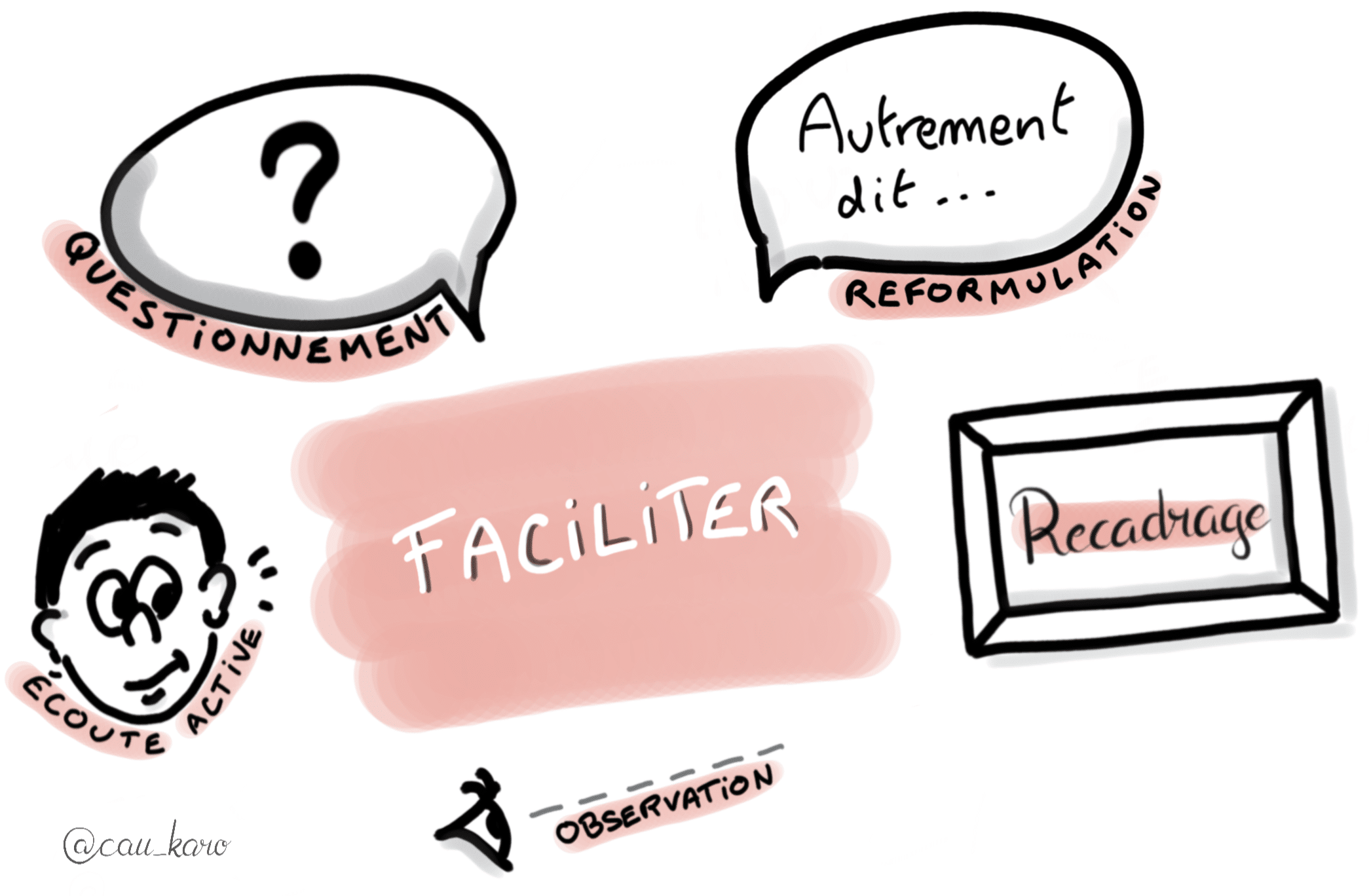Meetingitis is a scourge that is well known in companies today, and yet very difficult to combat. I've had the opportunity to participate in a number of them, each of which initially had a very laudable purpose, but the form of which may have made it incredibly boring.
It was when I saw the nth synchronization meeting looming with more than 15 people that I said to myself that I had to do something to help the participants to, if not to remove the maximum value, to waste as little time as possible and get straight to the point!
I propose in this article to simply describe to you what I did! 🙂
Context
In a context of Agility on the nascent scale, the sponsor of the approach has decided to organize a 2-hour synchronization point, every week, with all the major players from the different teams. We then find Managers, Architects, Scrum Masters, Lead Techs, Product Owners and others so I can't remember the title. All this to say that it then brings together between 15 and 20 people in the same place – and which for the record, turns out to be a room made for 6 to 8 people at the very start! 😛
The intention seems good to me, knowing that the idea is to get these different people used to seeing each other and discussing subjects that have an impact on the group as a whole. I am also invited there, which allows me to get to know the ecosystem much more quickly.
Not contributing to the content of the exchanges, I then apply myself to carefully observe the course of the session.

- There is no real agenda apart from the objective of a synchronization point
- Most attendees are on their computers or phones when not speaking
- Everyone is seated around the table and there is very little movement during the session
- Discussions can go into lengthy details that only concern a small part of the group
- It is when we try to close the session that some people remember a subject to be discussed, which restarts the machine
- The impression of a heavy atmosphere at certain times, where the participants appeared as prisoners of the meeting, waiting for the death knell to sound.
The 2h timebox was not exceeded as far as I remember but it really gave me the impression that it was more due to luck than intentional organization.
So, on the strength of this observation, I proposed to the sponsor to take over the facilitation of the next synchronization meeting – at the same time, I do nothing otherwise! 😛
Here is what I proposed to them during this new session.
Thoughts and Proposals
My first intention was to introduce a role of facilitator in this meeting in order to make it more effective, that is to say shorter but with the same contributions.
My reflection therefore revolved around different themes:
- How to have a better vision of the subjects to be treated?
- How do you have the right conversations at the right time?
- How to keep a sustainable pace to maintain a sufficient level of attention?
Let’s take these different topics one by one:
How to have a better vision of the subjects to be treated?
The thing that surprised me the most was the fact that you never really knew when the meeting was going to end. No upstream visibility and especially last-minute interventions that held everyone back at the end when people's attention was already on their next meeting or their upcoming coffee.
My first reaction was to say to myself:
You might as well ask them to write down their topics at the start of the meeting!
Indeed, I believe very little today (perhaps wrongly) that participants come prepared for this kind of meeting. This is why I thought that giving 5 minutes at the beginning for everyone to focus on the important topics to be discussed would be valuable.
Now, it was necessary to make these elements visible to everyone in order to be able to collectively manage the agenda and the rhythm. Each participant will therefore have to write on Post-it each of the subjects he or she wishes to discuss during this meeting with as a basic rule “one subject, one Post-it” which we will process using a visual management board.
The design of the board will be as follows:

- To do : where we will deposit all the subjects to be treated
- In progress : to clarify the subject of the current discussion
- Actions / Decisions : to put the group into action following the discussion (if necessary). Each action or decision will have a bearer in order to be able to follow the impact of this action / decision.
- Ended : to consider the subject as effectively closed.
| Note: of course, everyone is invited to come and place their own Post-it on the board in order to get people used to moving around during the session. Indeed, it will happen that topics emerge during the session, people will therefore have the responsibility to get up to add it in the column " To do " of the Board. |
How do you have the right conversations at the right time?
To answer this problem, 2 things seemed important to me:
- Differentiate subject types
- Play my role as a facilitator
Differentiate subject types
In my reflection, I thought to differentiate mainly 2 types of subjects:
| Information | Discussion |

|

|
| Sharing of information, most of the time in a top-down and rapid way, requiring no real exchanges or actions. and usually fast | Subjects requiring reflection, debate and therefore generally the implementation of actions and/or decision-making. |
Thus, if I take up one of the rules of the GTD (Getting Things Done), it is better to deal with quick subjects first to optimize the processing of its tasks. We will therefore start with all the subjects of the type Information then we will subsequently address topics of the type Discussion. This already allows us in a first step to structure the session collectively.
Play my role as a facilitator

To do this, I would sparingly use:
-
- There rewording : to ensure that the elements discussed have been well understood by all (as far as possible)
- I'active listening : in order to perceive the dissonances in the words that can undermine the dynamics of the session
- THE cropping : in order to ensure the sharing of different points of view without judgment and the refocusing on essential subjects
- THE questioning : to make sure that the discussions concern the right people, at the right time
- I'observation : in order to make sure of the interest of the subject for the group and to be able to distribute the floor in an equitable way
How to keep a sustainable pace to maintain a sufficient level of attention?
For the latter case, I considered that it was largely my role as a facilitator.
Indeed, the rhythm of the session will be mainly linked to the quality of my interventions during the conversations to rephrase, clarify and reframe the words of the participants while ensuring that the subjects are well treated and closed by action or decision if necessary.
Conclusion
This mode of facilitation made it possible to move from an initial synchronization point lasting 2 hours to 1 hour while dealing with all the subjects brought by the participants. The general feedback is also very positive with participants leaving with a smile and with, I hope, the impression of having had a useful meeting.
If we had to think in terms of cost, it's a very profitable operation: not only was I able to make myself useful for an hour, but about twenty people were able to save an hour in their agenda! 😛 However, it is still difficult to get people off their computers when there are a lot of people and with attention falling over time.
I am nevertheless convinced that it is an additional step towards more interactivity in meetings and that we have a real role to play in this direction. The idea would be to be able to transmit these tools and practices to as many people as possible and to transform them not into gadget tools to be used in an exceptional way, but rather as new work habits in order to restore the banner of these unloved meetings and yet so popular and thus guarantee a better collective performance.
Don't hesitate to test these little things at home if you haven't done so yet and let me know!
All your tips are also welcome 🙂







3 Responses
Mixed observation on the lack of preparation and efficiency. I also experienced the over-preparation…of the 40 slides of which we will only see 10 in the session because we are late anyway.
Indeed it is a privileged moment to propose to experiment other types of interactions
Nice scribings 😉
and nice facilitation
Q:
1) How do you prioritize topics? including those arriving during the session
2) do you limit (by number or timebox) information type topics? To leave enough time for decisions
3) the beginning of the “See together > Act together” sequence is well established. Have you experienced anything for "Learning together"? » What did they learn from your facilitation and experience? From their meetings? Of their subjects?
Thank you for sharing this and congratulations for the progress you have offered them!
I was asking myself the same questions as Christophe:
– How do you do the prioritization and if you timebox the interventions
– I was wondering if you weren't overwhelmed with subjects, which requires you to vote for a limited number while voting?
– Do information-type topics generate lengthy discussions?
– The sponsor can not give instructions to come without tel and pc?
Thank you and good luck to you.
Great article Oliver! Very clear and well written!
Good idea to apply a workflow to the meeting, it makes the participants a little more active and a good indicator of progress.
I had a weekly meeting replaced by a follow-up Kanban type board, in stand up, from more than 1 hour we went to 15 minutes! (with better tracking of actions/decisions as a bonus)
As for computers and telephones, I get help from the sponsor to “force” them to close before the meeting (to be done with diplomacy and kindness of course) or even specify in the invitation that the computers are not necessary. The fact of not having them often reduces the lengths of which you speak.
Thanks for the article!